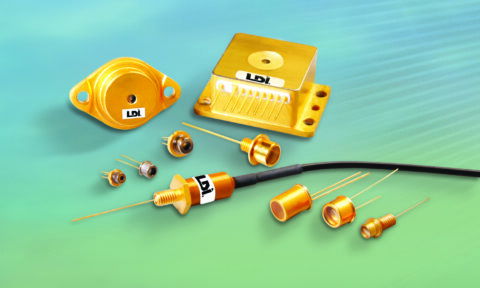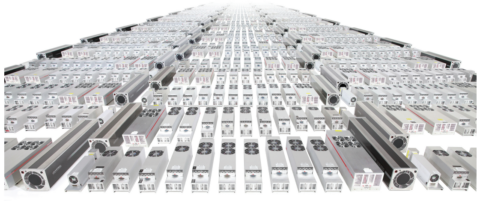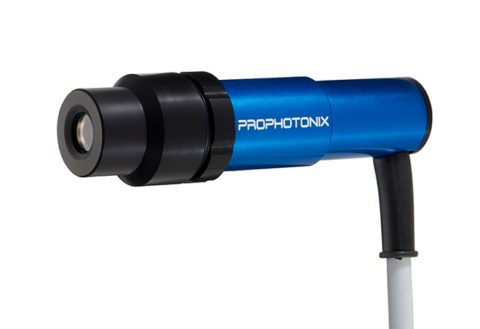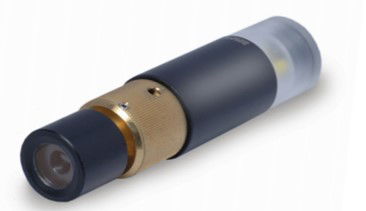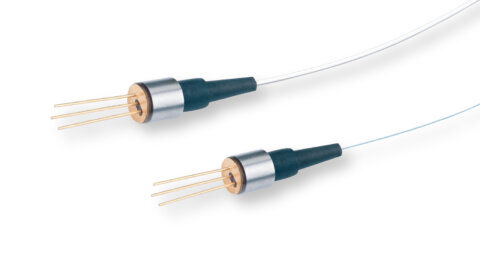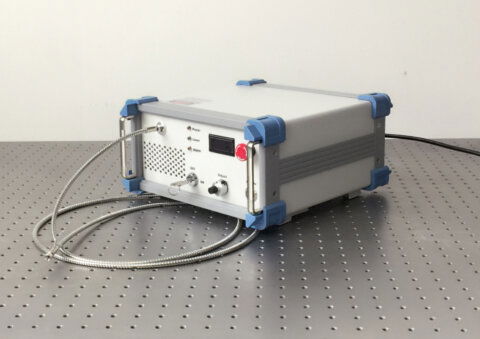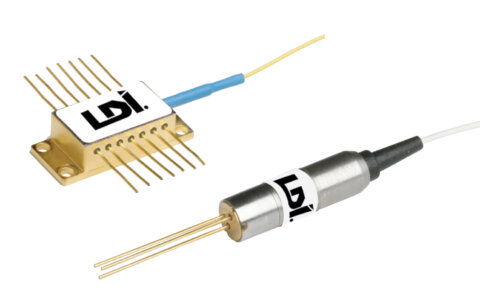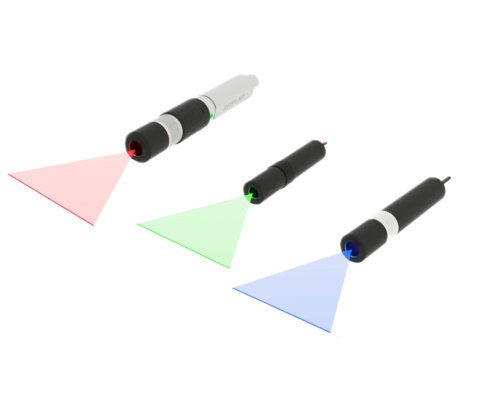Distributed Feedback (DFB) Lasers for Gas Sensing
- Technology
- Laser diodes
- Partner
- NEL / NTT Electronics
Distributed feedback (DFB) lasers for tuneable diode-laser spectroscopy (TDLS) are used to identify and measure gases in gaseous mixtures via near-infrared molecular absorption.
The wavelength range covers all relevant gases for chemical process control and climate change studies such as hydrogen fluoride (HF), water (H2O), ammonia (NH3), carbon monoxide (CO), hydrogen sulphide (H2S), methane (CH4), carbon dioxide (CO2).
Via temperature tuning the laser emission line is set to the dedicated gas wavelength. Thanks to the low width of the laser emission line, current swiping in the kHz range allows scanning over an individual absorption line obtaining e.g. the gas concentration and temperature.
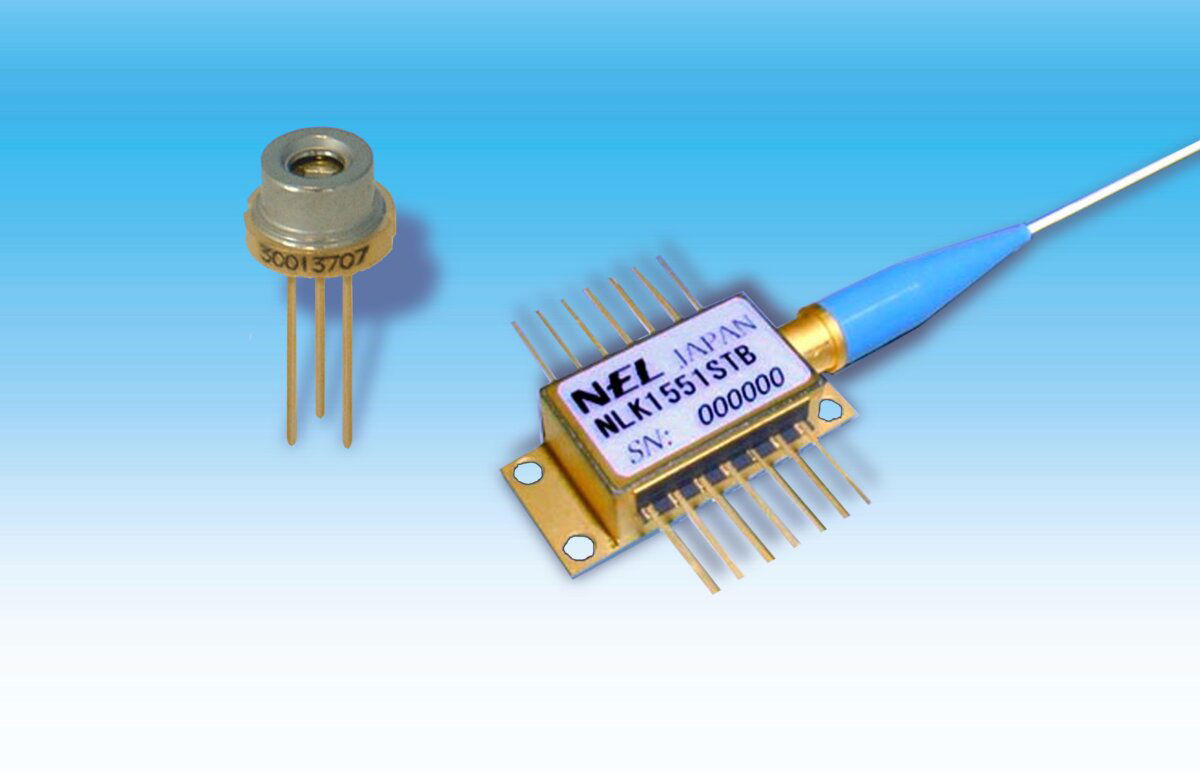
Range features
A high level overview of what this range offers
Features
- Lasers are available in fibre-coupled butterfly packages allowing easy integration in transmission systems with reference gas cells
- Lasers are also available in TO5-cans with integrated temperature stabilsation mechanisms for free-space applications
- Wavelength range: 1250nm – 2330nm
- Linewidth: ~ 2MHz
- Output power: up to 20mW
- Temperature and current tuning
Package types
- 14-pin butterfly with fibre coupling
- TO5-can with integrated TEC
Applications
- Combustion control in power plants and waste incineration plants
- Control of blast furnaces in the metal industry
- Online gas analysis in the petrochemical industry
- Moisture content analysis in process gases e.g. of the semiconductor industry
- Leak detection in pipelines (e.g. methane)
- Detection of greenhouse gases
We have a vast range of passive fibre-optic devices such as splitters, collimators, lenses, and photodiodes for these applications.
What’s in this range?
All the variants in the range and a comparison of what they offer
| Model | Wavelength range | Power |
|---|---|---|
NLK1 | 1260 – 1690nm | 10 – 20mW |
KELD1 | 1735 – 2330nm | 2 – 10mW |
| Package option | Type |
|---|---|
AAA | Butterfly |
AYF | TEC5-can with TEC |
FAQs
for Distributed Feedback (DFB) Lasers for Gas Sensing
A dfb laser is a single-frequency laser diode with an internal Bragg grating that stabilises wavelength and linewidth. This stability and fine tunability make dfb lasers the preferred sources for gas sensing (TDLS), where you lock onto narrow molecular absorption lines to measure concentration and sometimes temperature.
A dfb laser diode is coarse-tuned by temperature and fine-tuned by injection current, enabling kHz-rate sweeps across a target line while keeping a ~MHz linewidth. We supply dfb laser diodes and dfb diode laser variants that support both modes for precise, repeatable line scans.
Yes. OEMs can start from a bare dfb laser chip for custom integration, or choose qualified packages. Our dfb laser packaging options include 14-pin butterfly (fiber-coupled) and TO5 with integrated TEC for free-space optics.
For quickest time-to-prototype, select a dfb laser module or a fully pinned dfb laser diode module with monitor diode, thermistor/TEC, and optional isolator—ideal for drop-in use in field enclosures and rack systems.
Yes—engineers often use narrow-line sources to analyze fiber laser systems for gain profiling, wavelength calibration, or seeding. Depending on requirements, you may compare a dfb fiber laser to a diode DFB; the latter usually wins on size, cost, and ruggedness for industrial sensing.
Coverage spans ~1260–2330 nm with 2–20 mW output, addressing gases such as H₂O, CO₂, CH₄, NH₃, HF, H₂S, and CO. If you see BOM lines like “1080 nm laser diode,” we will map that request to the correct DFB wavelength and model for the intended absorption line.
An external-cavity laser can extend tuning but adds moving parts; a laser DFB (DFB diode) offers simpler mechanics, excellent stability, and lower cost. For most TDLS deployments, the diode-based DFB is the pragmatic choice.
Industrial designs favour butterfly packages with fiber pigtails and TEC control for thermal stability. Our partners (e.g., NEL / NTT Electronics) qualify dfb laser assemblies for long-term operation in harsh environments typical of gas sensing in power, petrochem, steel, and environmental monitoring.
We provide collimators, splitters, reference gas cells, lenses, and matched detectors, plus driver/TEC controllers, so your dfb diode integrates cleanly from source to detector with low loss and dependable control.
Yes. If a catalogue dfb laser does not meet your target line, power, package, or interface, we can adapt wavelength, fiber type, or packaging—or design a bespoke unit—leveraging our supplier network and in-house application support for gas sensing.
